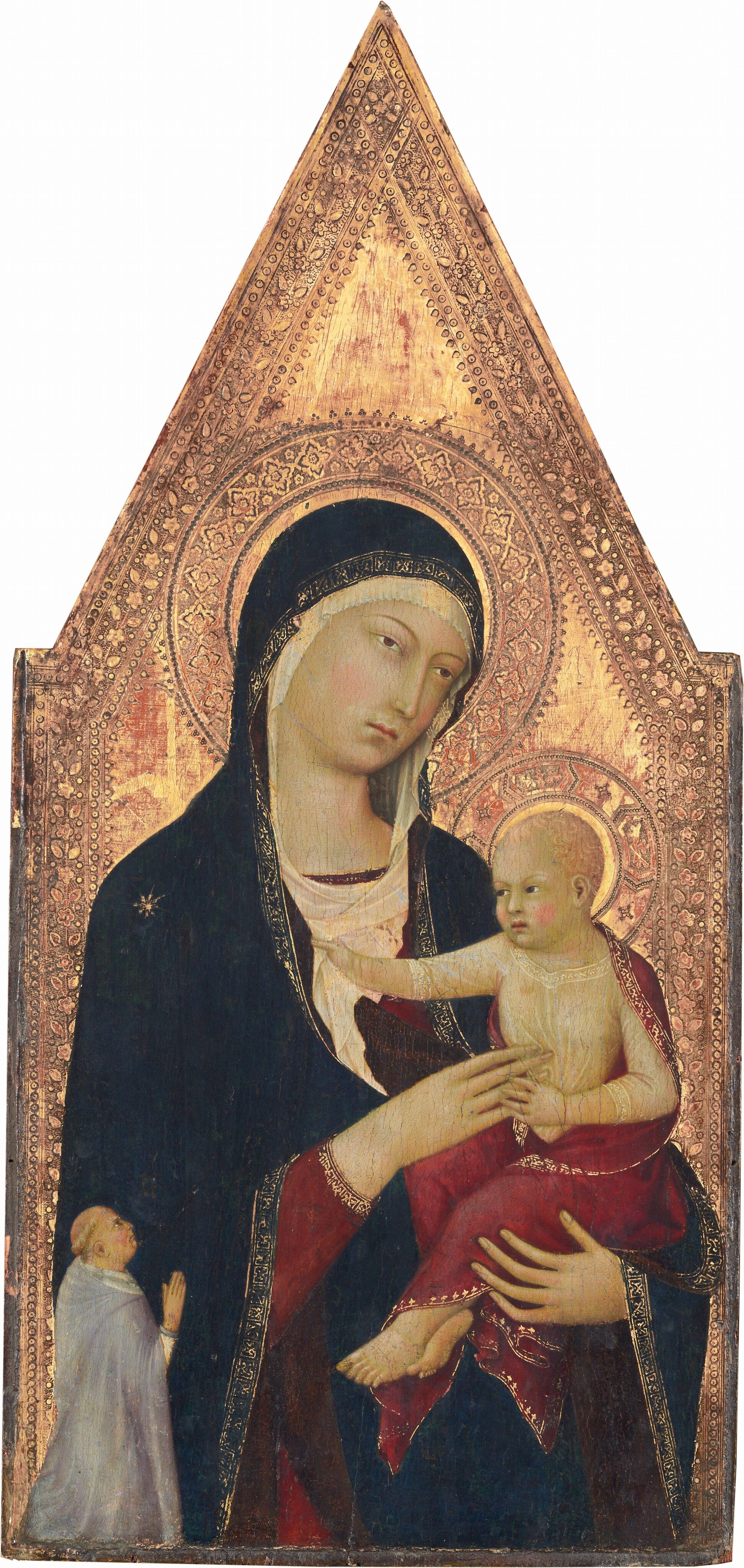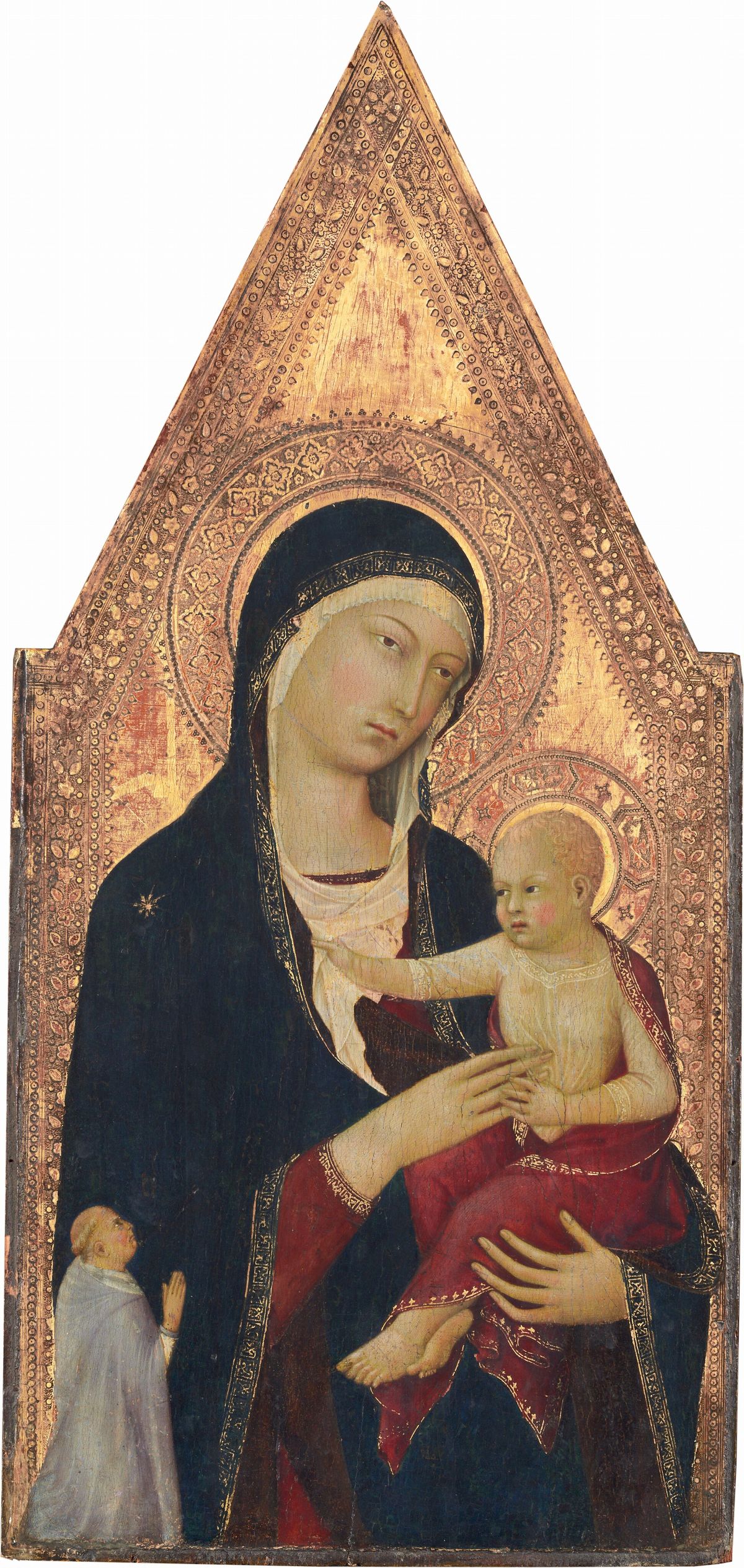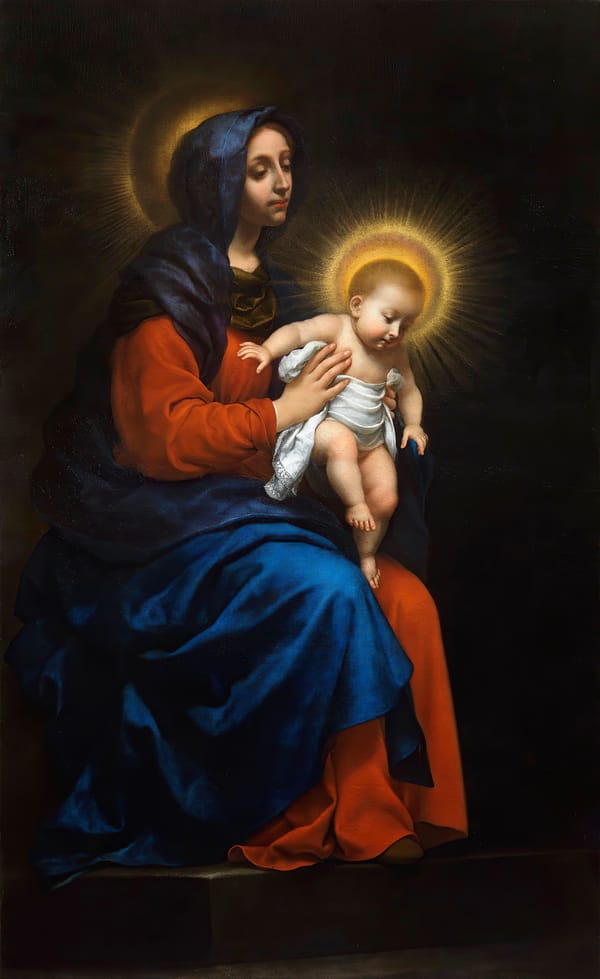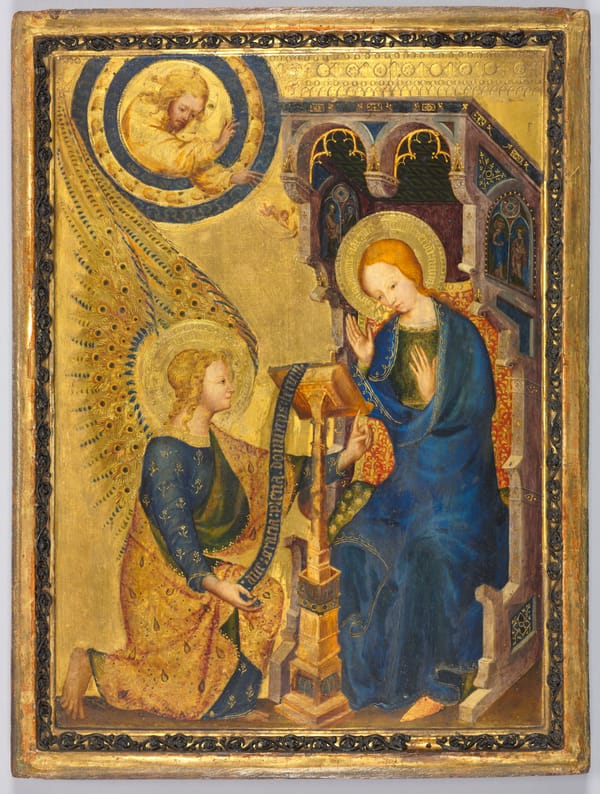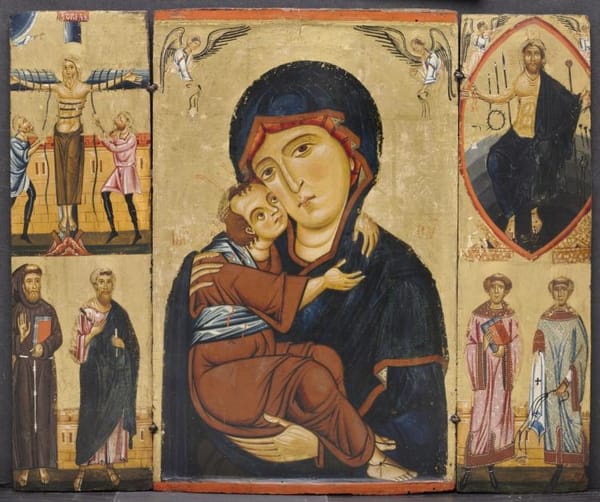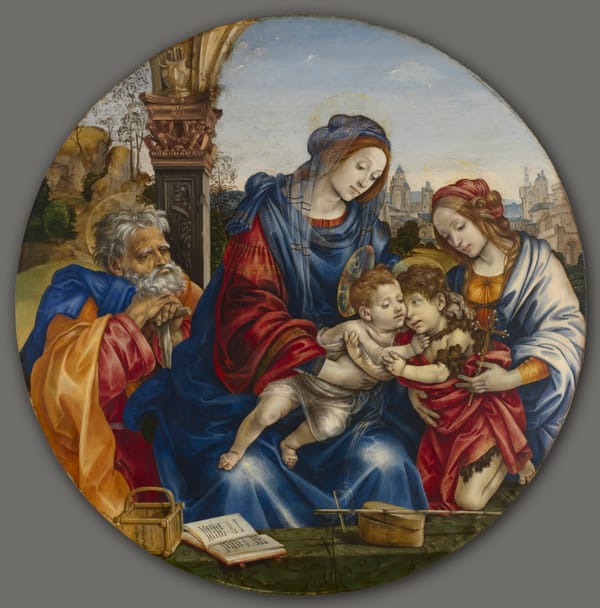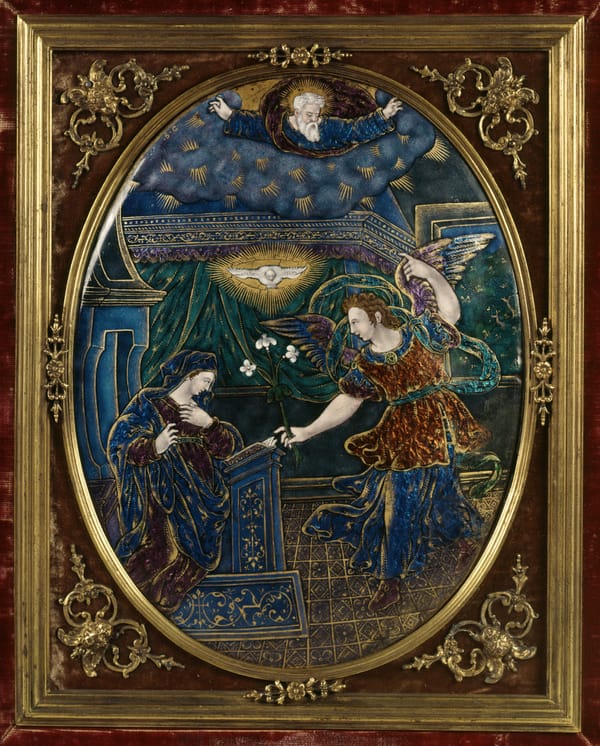This work was the left side of a diptych that probably depicted the Crucifixion on the opposite panel. At the lower left, looking up at a looming vision of the Virgin and Child, is a small, kneeling figure in rapt devotion. Lippo Memmi (Sienese, active 1317/1347) has given us a portrait of a particular individual, unshaven, his ruddy skin slightly sagging below his tonsured curls, suggesting advanced age. He commissioned this painting and used it in his private devotions.
Lippo linked the two panels visually in multiple ways, beginning with our monk-donor’s gaze to the right. Mary places her finger against Jesus’s chest in a traditional gesture that recalls icons of the Hodegetria (as seen in the National Gallery of Art's Byzantine Enthroned Madonna and Child): she is pointing the way to salvation through Jesus and to his future suffering on the cross. The child’s tug at Mary’s veil is likely another reference to the Passion and to the death shroud that will cover him. With the pull and pucker of the cloth under their fingers, Lippo gives this symbolic sign a naturalistic touch.
The green-tinged faces in early Italian pictures sometimes discomfit modern viewers. What we are seeing, in fact, is the green earth pigment of the underpainting coming through as the colors on top have been abraded over time. This is not what the artist intended or what his contemporaries would have seen. The painting’s worn surface also gives us a good chance to see the red clay layer (bole) applied beneath all the gilt areas to give the gold a rich, warm tone.
Free Downloads Below
Hi-Res
1200px
800px
